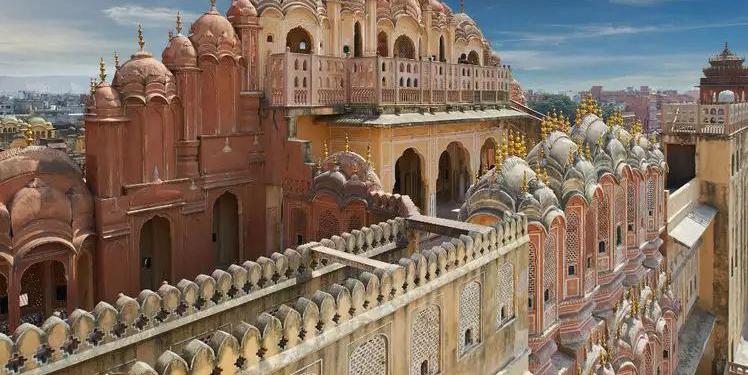In a boost to its ability to bring in tourists, the walled city of Jaipur, has made it to the UNESCO World Heritage Site list. The city is known for its iconic architectural legacy and vibrant culture. Breaking this big development, UNESCO tweeted, “Just inscribed as @UNESCO #WorldHeritage Site: Jaipur City in Rajasthan, #India. Bravo.” The major announcement was made after the 43rd Session of the UNESCO World Heritage Committee, underway at Baku (Azerbaijan) from June 30 to July 10, examined the nomination of the walled city of Jaipur for the UNESCO World Heritage tag.
🔴 BREAKING
Just inscribed as @UNESCO #WorldHeritage Site: Jaipur City in Rajasthan, #India 🇮🇳. Bravo 👏
ℹ️ https://t.co/thV0mwrj0X #43WHC pic.twitter.com/NU4W32dy3x
— UNESCO 🏛️ #Education #Sciences #Culture 🇺🇳 (@UNESCO) July 6, 2019
PM Modi expressed happiness about this development. He tweeted, “Jaipur is a city associated with culture and valour. Elegant and energetic, Jaipur’s hospitality draws people from all over. Glad that this city has been inscribed as a World Heritage Site by @UNESCO.”
Jaipur is a city associated with culture and valour. Elegant and energetic, Jaipur’s hospitality draws people from all over.
Glad that this city has been inscribed as a World Heritage Site by @UNESCO. https://t.co/1PIX4YjAC4
— Narendra Modi (@narendramodi) July 6, 2019
A senior official spoke about the inclusion of Jaipur in the UNESCO World Heritage list and said, ICOMOS (The International Council on Monuments and Sites) had inspected the city in 2018 and the WHC in Baku examined the notification and included Jaipur in the Heritage list.
The Walled city of Jaipur was founded way back in 1727 AD under the patronage of Sawai Jai Singh II. Over the passage of time, Jaipur emerged as a city rich in cultural legacy and serves as the capital city of the state of Rajasthan, which is famous for its historical and architectural legacy. The UNESCO office in Delhi had earlier said, “In town planning, it shows an interchange of ancient Hindu, Mughal and contemporary Western ideas that resulted in the form of the city.” It must be noted that the proposal to include the city in the World Heritage site list on account of its exemplary town planning and architecture that is symbolic of an amalgamation and important exchange of ideas in the late medieval period.
The UNESCO office also said that the Jaipur town is also an exceptional example of late medieval trade town in South Asia. It defined new concepts for thriving trade and commercial hub. Jaipur has also been recognised by the UNESCO for its association with living traditions in the forms of craft that have national and international recognition.
It is clear that the walled city of Jaipur has been rewarded for its ability to preserve its historical legacy. The architectural legacy of the city, no doubt, gives it an advantage. However, the city also deserves to be applauded for continuing the age-old trading and commercial practices. The Pink City does not serve as a remnant of the past but serves as a living representative of the cultural legacy of the city. It has been appropriately rewarded as a UNESCO heritage site.































